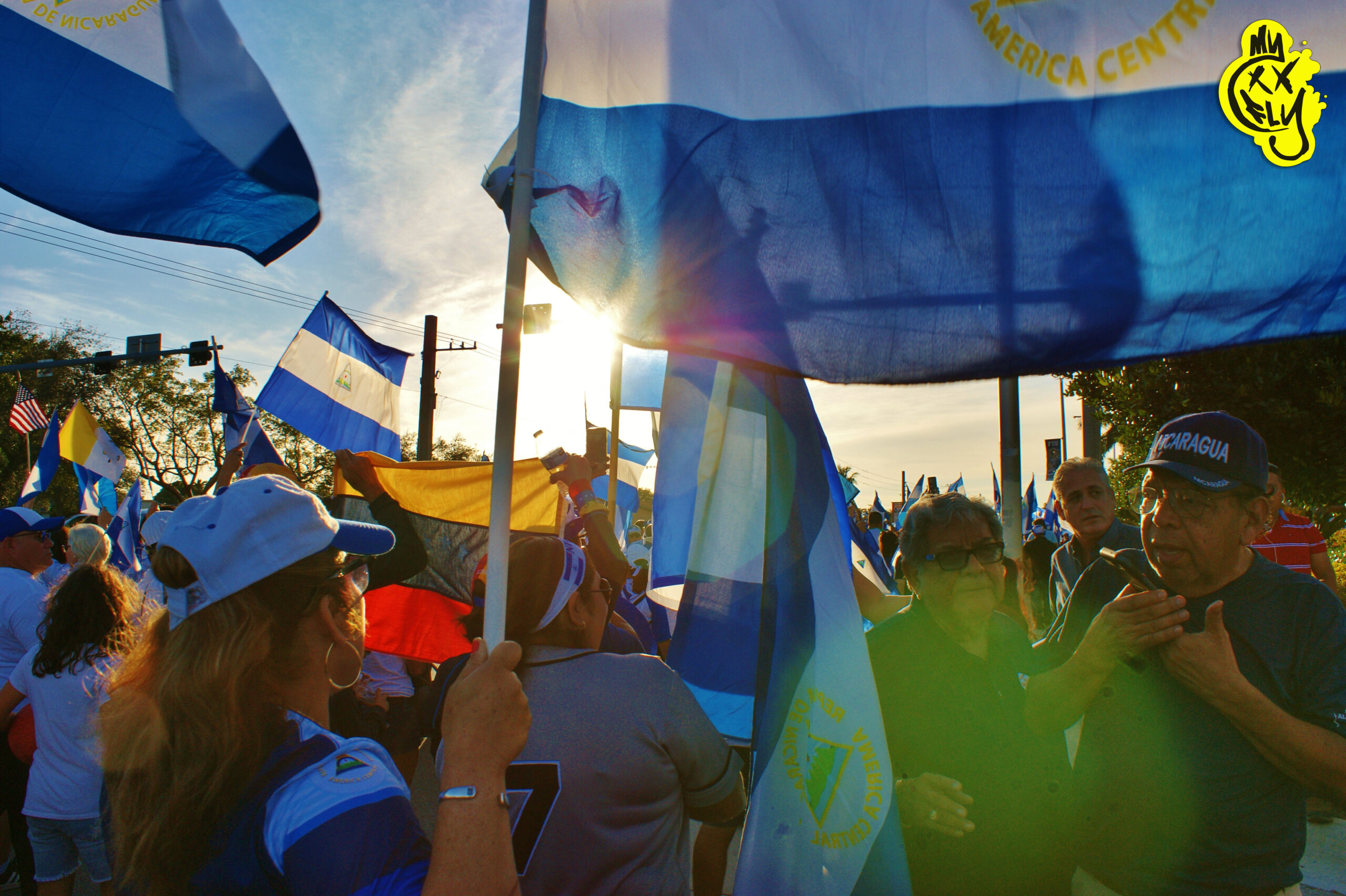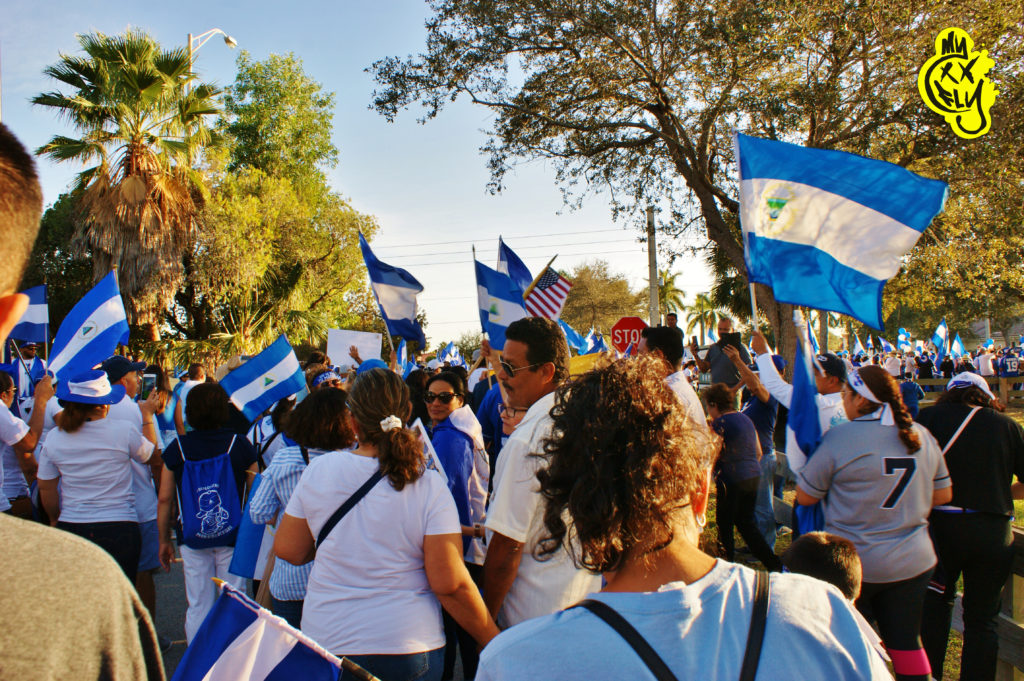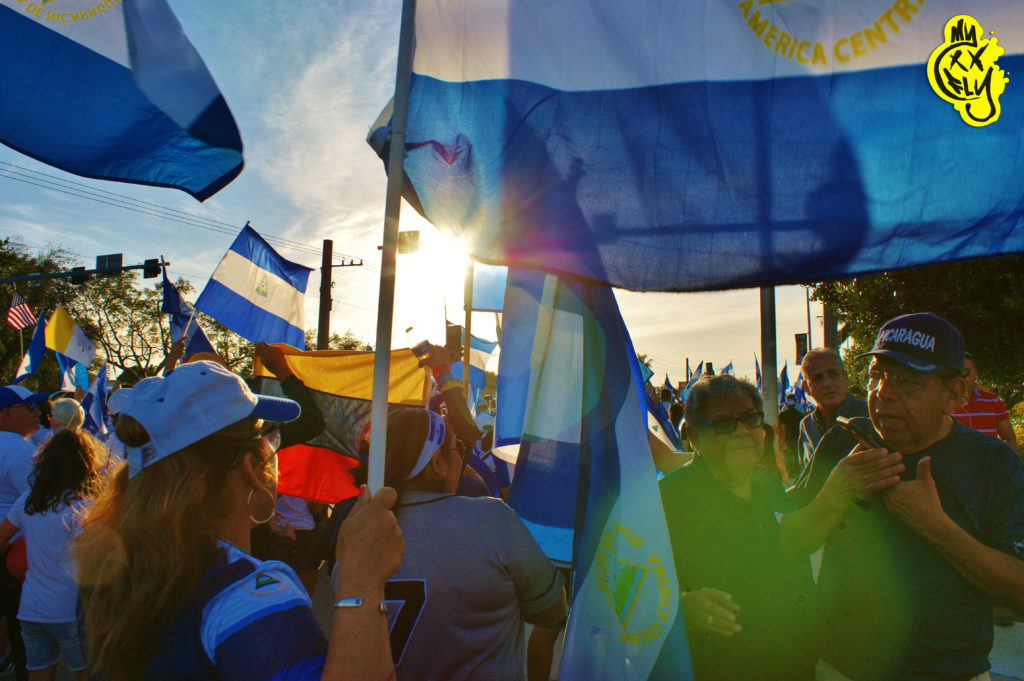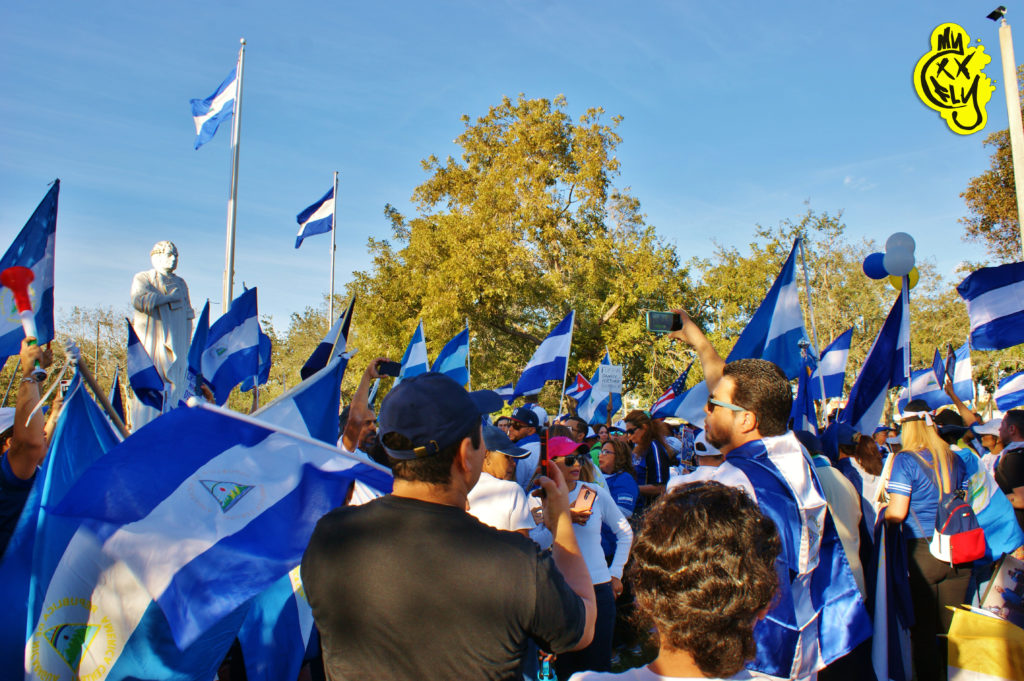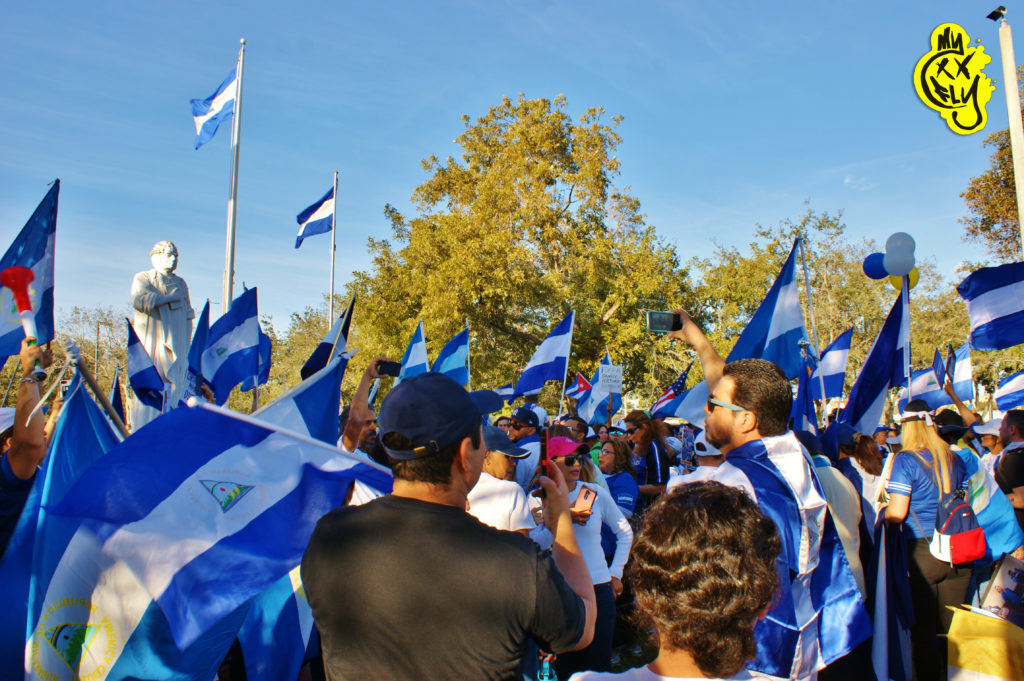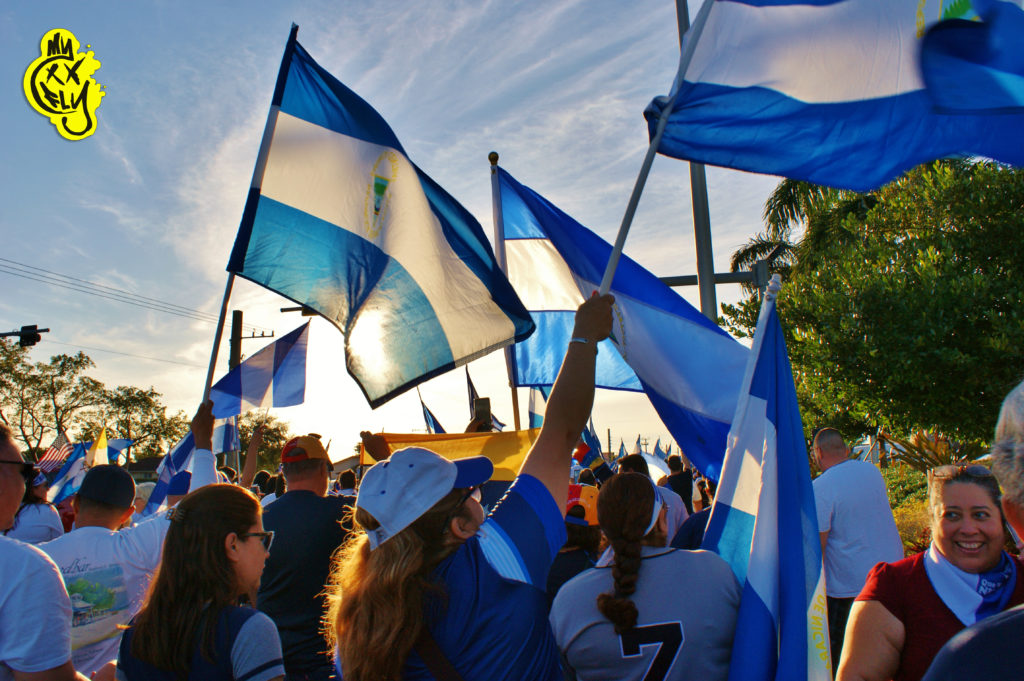On Saturday 19, 2019 at 4:00 pm over 3,000 Nicaraguans and allies gathered at Ruben Dario Park in Miami, FL to march for the release of political prisoners in Nicaragua under the Ortega-Murillo dictatorship. A political crisis that erupted on April 18, 2018 when peaceful protesters comprised of mostly university students were killed by police, the last nine months in Nicaragua have proven the fragility of democracy in the hands of tyrants. Increasingly violent government suppression including widespread censorship, disappearances, and targeted killings of community leaders, clergy, reporters, and civilians are only a handful of human rights violations being perpetrated by the government. Outrage over these injustices and a demand for the release of political prisoners brought Nicaraguan immigrants, Nicaraguan-Americans, and allies to march.
The march in Miami, FL made up of men, women, children, and the elderly kicked off after a rendition of Nicaragua’s national anthem in front of the statue of poet Ruben Dario. Nicaraguan and independent news outlets such as Articulo 66, Nicaragua Investiga, and Cafe con Voz provided press coverage as a sea of protesters in blue and white flooded Flagler Street chanting “Viva Nicaragua Libre!”, “Cual es la ruta? Que se vaya el hijueputa!”, and “Eran estudiantes, no eran delincuentes!”.
Among the thousands marching into the evening waving flags with fervor between 98th and 114th avenue, were two prominent Nicaraguan political activists in exile. Conspicuously absent from the march was EL Nuevo Herald and Latin media giants based out of Miami, FL Univision and Telemundo. A march of this scale should have made local headlines as Miami-Dade county boasts the largest Nicaraguan-diaspora in the United States with approximately 120,000 people. This oversight however came as no surprise to attendees and is a glimpse into the racial divides, colorism, and erasure of BIPOC that exist in the United States and among Latinos in America. Despite the scale of the political unrest in Nicaragua and the dangers of a dictatorship rising in the hemisphere, there is little press coverage of Nicaraguan current events in the United States.

